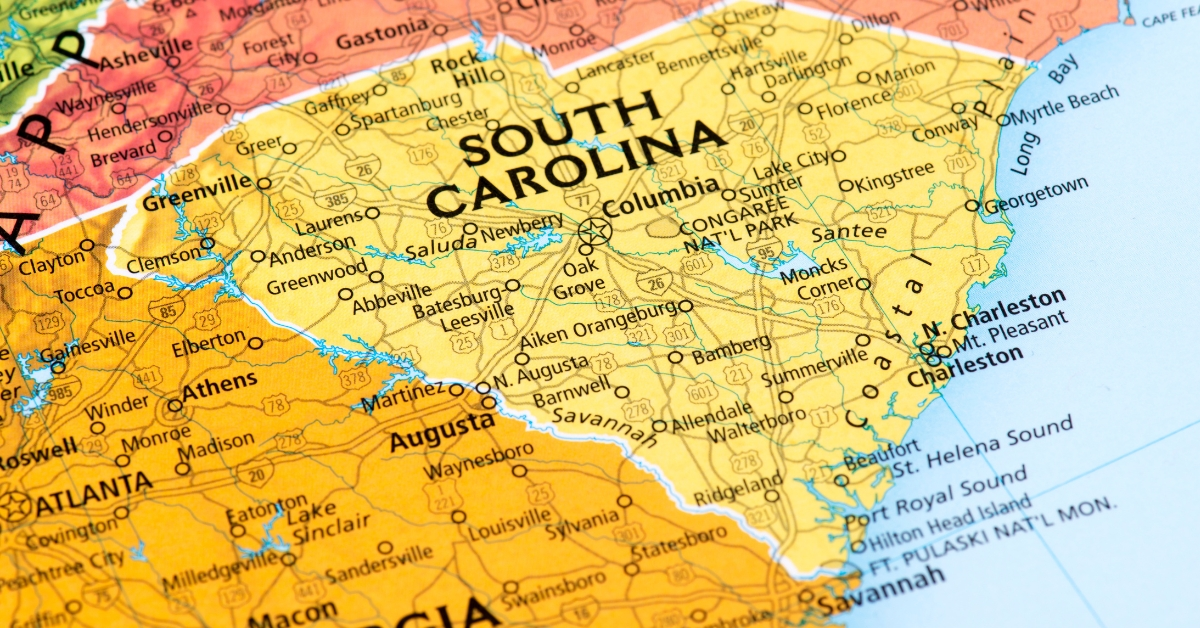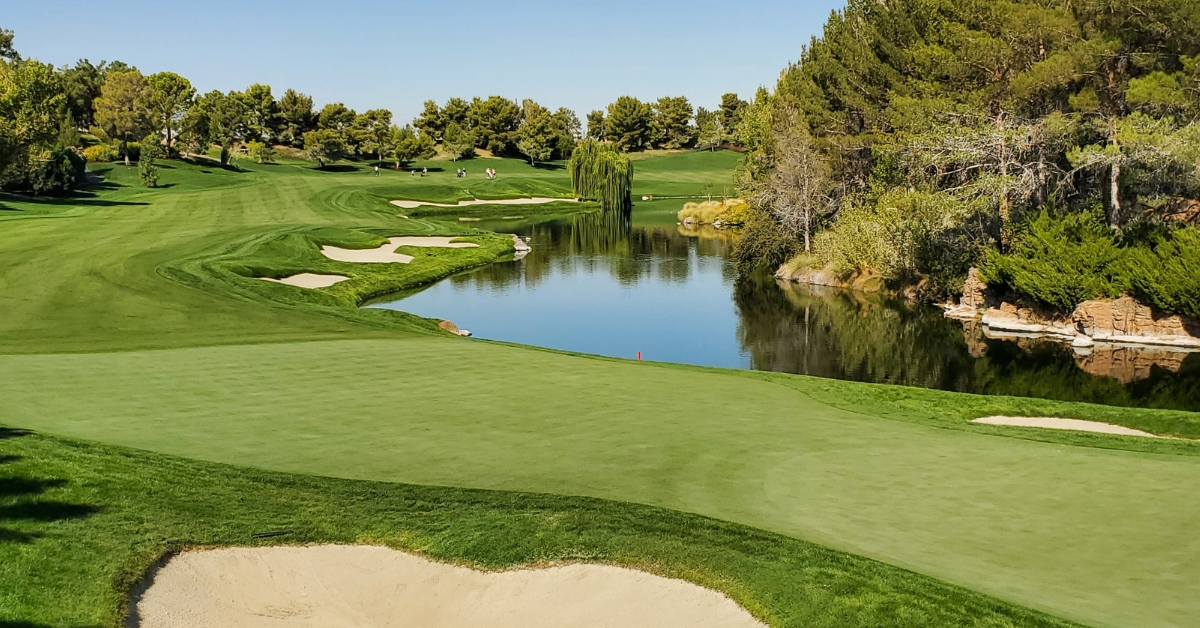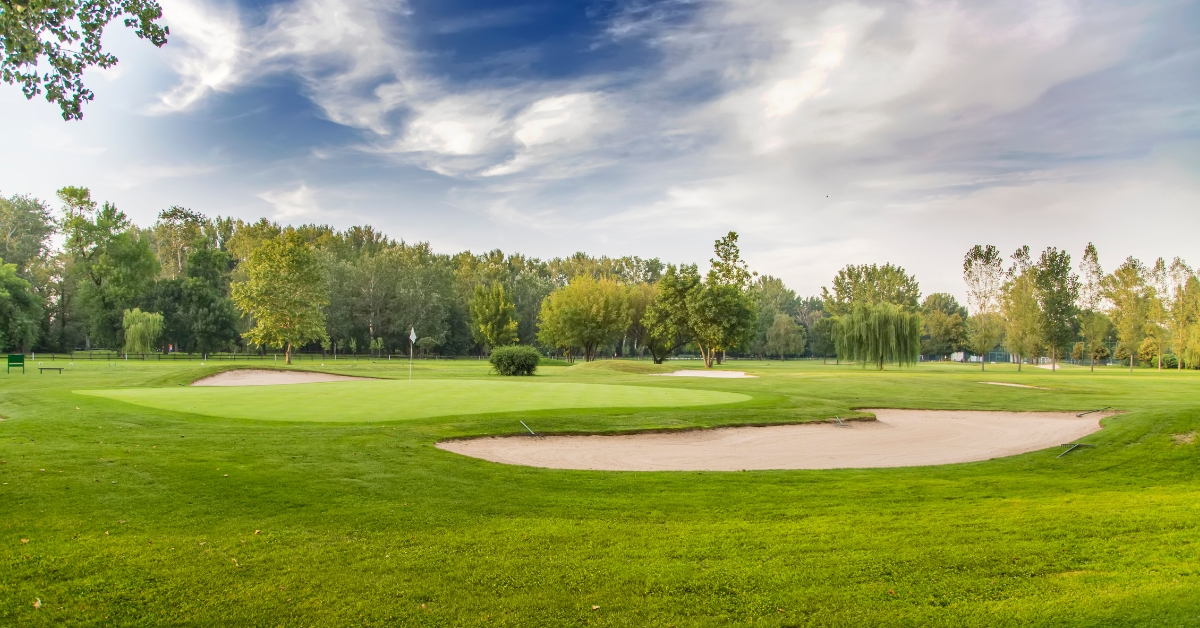South Carolina is a golfer’s paradise, home to some of the most beautifully designed courses in the world. But what you may not realize is how famous golf course designers make these courses stand out. It’s their touch that brings the unique vision and expertise to each hole.

Let’s delve into how these architects have shaped the golfing landscape of South Carolina, turning it into a premier destination for golf enthusiasts.
A Closer Look at Famous Golf Course Designers in South Carolina

When you play on a golf course in South Carolina, you’re experiencing the legacy of some of the world’s most famous golf course designers. These architects have crafted layouts that challenge and delight golfers, drawing players from around the globe.
Let’s explore the contributions of these renowned designers and how they’ve shaped the golfing landscape in South Carolina.
Robert Trent Jones Sr.

Robert Trent Jones Sr. is a name synonymous with golf course architecture. His influence is felt deeply in South Carolina, particularly at the Dunes Golf & Beach Club in Myrtle Beach.
Jones believed in creating courses that were a “hard par but an easy bogey,” which means golfers of all levels can enjoy the challenge without feeling overwhelmed. His designs often incorporate natural water hazards and strategic bunkering, elements that have become hallmarks of his work.
Jones’s philosophy was to use the natural contours of the land to create visually stunning and technically challenging courses. This approach can be seen in the way he integrated the ocean views and natural dunes at the Dunes Golf & Beach Club, making it a favorite among golfers.
Pete Dye

Pete Dye, a giant in golf course design, left an indelible mark on South Carolina with Harbour Town Golf Links on Hilton Head Island.
Known for his innovative and often visually intimidating designs, Dye’s courses are as beautiful as they are demanding. Harbour Town, with its iconic lighthouse and tight, tree-lined fairways, is a perfect example of his ability to blend natural beauty with strategic challenges.
Dye’s philosophy was to design courses that made players think. His layouts often include risk-reward scenarios that require careful planning and precise execution. This strategic element is a key reason why Harbour Town is a regular stop on the PGA Tour and a favorite among professional golfers.
Tom Fazio

Tom Fazio is another prominent name in South Carolina’s golf scene. Known for his meticulous attention to detail and his ability to create visually stunning courses, Fazio has designed several notable courses in the state.
His work at the Barefoot Resort in North Myrtle Beach, particularly the Love Course and Fazio Course, showcases his talent for integrating natural beauty with challenging play.
Fazio’s designs are characterized by their strategic use of bunkers and water hazards, creating a visually appealing yet challenging experience. His courses often feature wide fairways and large greens, providing a fair test for golfers of all skill levels while maintaining a high level of aesthetic appeal.
Arnold Palmer

Arnold Palmer, affectionately known as “The King,” made significant contributions to golf course design, including several courses in South Carolina. His work at Myrtle Beach National and other venues in the region reflect his philosophy of creating playable yet challenging courses.
Palmer’s designs often feature wide fairways and strategically placed hazards, inviting golfers to take risks and rewarding them for successful shots.
Palmer’s approach to design was player-friendly, focusing on making the game enjoyable for all skill levels. His courses are known for their strategic layout and beautiful scenery, making them popular destinations for golfers from around the world.
A Testament to Golf Course Design Mastery

South Carolina’s golf courses are a testament to the vision and expertise of some of the most respected golf course designers in the world. From the strategic brilliance of Pete Dye to the aesthetic mastery of Tom Fazio, these architects have created courses that offer both challenge and beauty.
As you play these courses, you’re not just enjoying a round of golf; you’re experiencing the legacy of the great minds that shaped them. So next time you’re out on the green, take a moment to appreciate the artistry and skill that went into designing your favorite course.
But golf course creation takes teamwork from many sources who make it happen, including construction, landscape specialists, and asphalt companies to create the cart paths. If you’re wondering how it all works, keep reading.
And if you’re designing a golf course, get in touch with us at AMP Paving and find a partner you can depend on for your blacktop!
How Does Golf Course Design Work?

Have you ever wondered what goes into creating the stunning golf courses we all love to play on? Golf course design is a fascinating blend of art, science, and strategy.
Whether you’re playing at the prestigious Augusta National Golf Club or a local favorite, the work of a skilled, golf course designer and architect is evident in every fairway and green. Let’s dive into the process and see how these beautiful landscapes come to life.
The Vision and Planning Stage
The journey of a golf course begins long before the first hole is even considered. It starts with a vision. Golf course architects like Robert Trent Jones Sr. or Pete Dye begin by analyzing the natural landscape. They look at the terrain, soil quality, and existing vegetation. This stage is crucial as it sets the foundation for how the course will interact with its environment.
A key aspect of this stage is sustainability. Modern golf course designers are increasingly mindful of environmental impact. They aim to create courses that harmonize with their surroundings, often incorporating native plants and water conservation techniques. This approach not only preserves the local ecosystem but also enhances the natural beauty of the course.
Design and Layout
Once the initial analysis is complete, the design phase begins. This is where the architect’s creativity truly shines. The goal is to craft a layout that is both challenging and enjoyable for players of all skill levels. Architects consider factors like wind direction, sun angles, and natural obstacles to design holes that are strategically interesting.
For instance, courses designed by famous architects often feature signature holes that are particularly memorable. Pete Dye’s Harbour Town Golf Links is renowned for its lighthouse backdrop on the 18th hole, creating a visually striking and challenging finish. Similarly, the Dunes Golf & Beach Club designed by Robert Trent Jones Sr. is known for its challenging water hazards.
Construction
With the design finalized, construction begins. This phase involves shaping the land to match the architect’s vision. Heavy machinery is used to move earth, create elevation changes, and build bunkers and water features. Precision is key, as even slight deviations can affect the course’s playability and aesthetics.
During construction, attention to detail is paramount. The quality of the greens, fairways, and bunkers must meet high standards to ensure a consistent and enjoyable playing experience. Modern techniques, such as computer-aided design (CAD) and GPS technology, help achieve this precision.
Fine-Tuning and Maintenance
Once construction is complete, the course undergoes a period of fine-tuning. This involves growing and maintaining the grass, adjusting the layout based on player feedback, and ensuring all features function as intended. It’s a continuous process that can take several months to perfect.

Even after the course opens, maintenance is an ongoing task. Greens need to be mowed, bunkers raked, and fairways kept in top condition. Courses like Myrtle Beach National, designed by Arnold Palmer, are known for their meticulous upkeep, ensuring that they remain in pristine condition year-round.
Blending Creativity & Inspiration With Technical Skills & Game Strategy
Golf course design is a meticulous process that blends creativity, technical skill, and a deep understanding of the game. From the initial vision to the final touches, every aspect is carefully considered to create a course that challenges players and showcases the natural beauty of its location.
Next time you tee off, take a moment to appreciate the intricate work that went into crafting the course beneath your feet.
Let the Professionals at AMP Paving Create Your Blacktop Surfaces

At AMP Paving, we understand the importance of high-quality blacktop surfaces. If you’re looking to enhance the pathways or parking lot of your golf course, our team of professionals is here to provide top-notch paving services.
We combine years of experience with a commitment to excellence, ensuring that every project meets the highest standards.
Our Expertise
Our team at AMP Paving brings a wealth of knowledge and experience to every job. Much like the famous golf course designers who have transformed the landscapes of golf courses around the world, we approach each project with a blend of artistry and technical skill.
We take inspiration from the meticulous planning and strategic design seen in golf course architecture, ensuring that your blacktop surfaces are both functional and aesthetically pleasing.
Designing Courses With Quality Materials and Techniques
We use only the best materials and latest techniques in our paving projects. Our commitment to quality mirrors the standards set by iconic golf course architects such as Robert Trent Jones Sr. and Pete Dye.
Just as these designers have created legendary courses like Augusta National and Pebble Beach, we aim to craft blacktop surfaces that stand the test of time.
Personalized Service

At AMP Paving, we believe in personalized service. Every project is unique, and we take the time to understand your specific needs and preferences. Whether it’s a large parking lot or winding golf paths, we tailor our services to meet your exact requirements.
Our attention to detail and dedication to customer satisfaction set us apart, much like the renowned courses of Winged Foot Golf Club or Cypress Point Club, which are known for their exceptional design and maintenance.
Sustainable Practices
We are committed to sustainability in our paving practices. To minimize environmental impact, we utilize eco-friendly materials and techniques.
This approach is inspired by modern golf course designers who prioritize sustainability in their projects, ensuring that courses like Pacific Dunes and Sand Valley not only offer great playability but also protect natural resources.
We Offer a Free Quote For Your Golf Course Projects
Choosing AMP Paving means choosing quality, reliability, and exceptional service. Just as the famous golf course designers of the world offer an unparalleled golfing experience, our blacktop surfaces provide the durability and beauty you deserve.
Let us bring our expertise to your next golf course paving project and create a surface that will serve you well for years to come. Contact us at AMP Paving today to learn more about how we can transform your golf course with professional blacktop paving services.
At AMP Paving, we’re not just building surfaces; we’re building lasting impressions.

